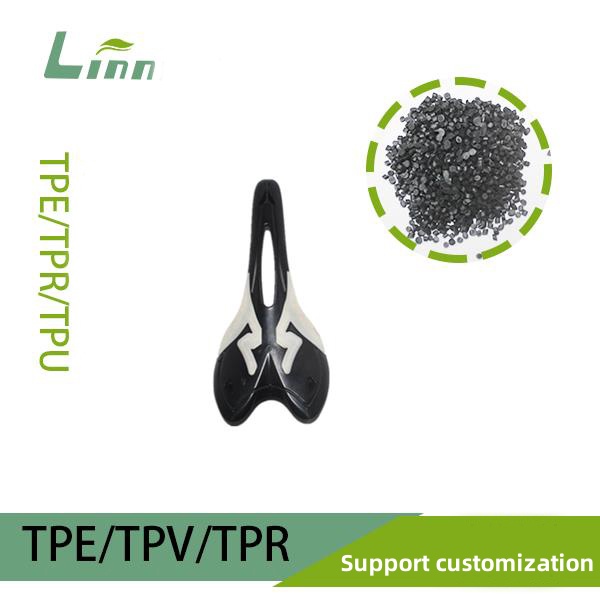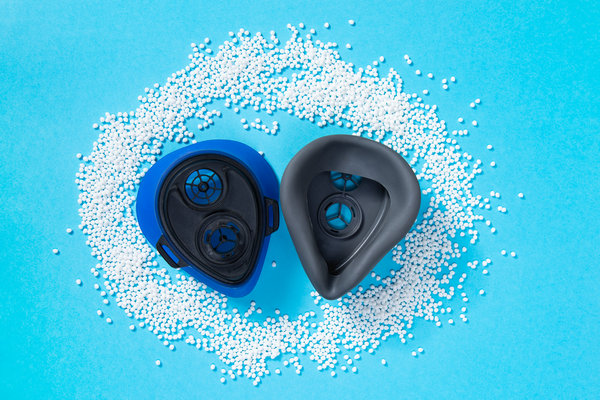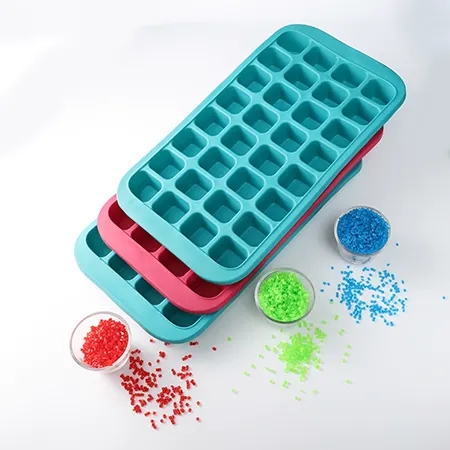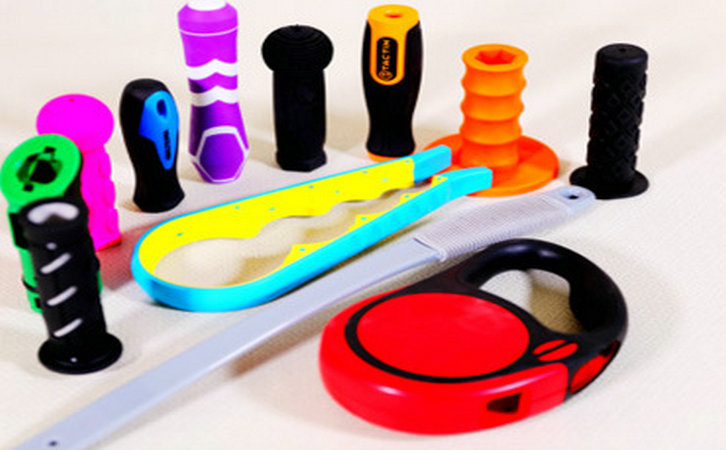As someone who’s been in the plastics industry for over fifteen years, I’ve tackled countless challenges in overmolding processes, particularly with TPR (thermoplastic rubber) on PP (polypropylene) substrates. One issue that keeps popping up is the appearance of water vapor or moisture-related defects, like bubbles, haze, or surface imperfections, in the final product. It’s a problem that can derail production and frustrate even seasoned engineers. Drawing from my experience, I’ll explain why this happens and share practical solutions to ensure a smooth, high-quality overmolding process.

What’s Happening with Water Vapor in TPR Overmolding?
When TPR is overmolded onto a PP substrate, the process involves injecting molten TPR onto a pre-molded PP part to create a soft-touch grip or functional layer. The presence of water vapor—manifesting as bubbles, cloudy patches, or weak bonding—often points to moisture trapped in the materials, machine, or process environment. This moisture can vaporize under the high temperatures of injection molding, causing defects. The culprits typically fall into three categories: material-related issues, molding process conditions, and equipment or environmental factors. Let’s break them down.
Material-Related Causes of Water Vapor
1. Moisture in TPR or PP Pellets
Both TPR and PP are generally considered non-hygroscopic, meaning they don’t readily absorb moisture from the air. However, certain TPR formulations, especially those based on TPU (thermoplastic polyurethane) or containing hygroscopic additives, can absorb moisture if stored improperly. Even PP, while less prone, can pick up surface moisture in humid conditions. When these materials are heated during molding, trapped moisture turns into steam, creating bubbles or haze in the overmolded part.
I recall a project where a TPR grade with a nylon-based additive caused persistent bubbling. After testing, we found the pellets had been stored in an open warehouse with 70% humidity. Drying the TPR at 80°C for three hours before molding solved the issue.
2. Incompatible Material Combinations
TPR and PP need to be chemically compatible for strong bonding during overmolding. If the TPR grade isn’t optimized for PP adhesion (e.g., lacking proper polar functional groups), the bond may be weak, allowing moisture to seep into micro-gaps between layers. This trapped moisture can vaporize during molding or post-processing, causing defects. I’ve seen cases where switching to a TPR grade specifically designed for PP overmolding eliminated vapor-related issues.
3. Contaminants in Materials
Contaminants like oils, mold release agents, or recycled material residues can introduce moisture or volatile compounds. For instance, recycled PP often contains trace moisture or impurities from previous processing. In one factory, we traced water vapor defects to a batch of recycled PP that hadn’t been properly dried after regrinding.

Molding Process Conditions
1. Improper Barrel Temperature
The temperature profile in the injection molding machine is critical. If the barrel temperature for TPR is too high (e.g., above 220°C for most TPR grades), any residual moisture in the material can rapidly turn into steam, creating bubbles. Conversely, if the PP substrate is too cold when TPR is injected, poor bonding can trap air or moisture at the interface. I typically recommend a barrel temperature of 180–210°C for TPR and ensuring the PP substrate is preheated to 40–60°C for better adhesion.
2. Insufficient Drying
Even non-hygroscopic materials like TPR and PP can benefit from drying, especially in humid environments. If the pellets aren’t dried properly, surface moisture or absorbed water in additives can vaporize during molding. In my experience, drying TPR at 70–80°C for 2–4 hours and PP at 60–70°C for 1–2 hours can prevent most moisture-related issues.
3. Injection Speed and Pressure
High injection speed or pressure can trap air or moisture in the mold, especially if the TPR flows too quickly over the PP substrate. This can create turbulence that traps tiny air pockets, which combine with moisture to form vapor bubbles. I’ve found that lowering the injection speed to a moderate level (e.g., 50–70% of maximum) and keeping pressure in the range of 50–80 MPa improves flow and reduces defects.
Equipment and Environmental Factors
1. Mold Temperature and Cooling
The mold temperature plays a big role in overmolding quality. If the mold is too cold (e.g., below 30°C for TPR), the TPR may cool too quickly, trapping moisture or air at the interface with PP. On the other hand, a mold that’s too hot can prolong the cooling time, allowing moisture to migrate and form vapor. I aim for a mold temperature of 40–60°C for TPR overmolding on PP, adjusted based on part geometry.
2. Mold Venting
Poor mold venting can trap air and moisture in the cavity, leading to vapor-related defects. Vents need to be clean and properly sized (typically 0.01–0.03 mm deep) to allow gases to escape without causing flash. I once worked on a project where clogged vents were the main culprit behind cloudy patches in TPR-overmolded parts. Cleaning the vents and adding two additional 0.02 mm vents fixed the issue.
3. Environmental Humidity
High humidity in the molding facility (above 60% relative humidity) can introduce moisture to both the materials and the mold surface. In humid climates, I’ve seen water vapor issues spike during rainy seasons. Installing a dehumidifier near the hopper or molding area can make a huge difference.

Practical Solutions to Eliminate Water Vapor
Here’s a table summarizing the key causes and solutions for water vapor issues in TPR overmolding on PP:
|
Issue |
Possible Cause |
Solution |
Expected Outcome |
|---|---|---|---|
|
Bubbles or Haze |
Moisture in TPR or PP pellets |
Dry TPR at 70–80°C for 2–4 hours; dry PP at 60–70°C for 1–2 hours |
Reduced vapor formation |
|
Weak Bonding |
Incompatible TPR/PP grades |
Use TPR formulated for PP adhesion; test bond strength |
Stronger, moisture-free interface |
|
Cloudy Patches |
Poor mold venting |
Clean or add vents (0.01–0.03 mm); ensure proper vent placement |
Fewer trapped gases and defects |
|
Vapor at Interface |
Improper temperatures |
Set barrel at 180–210°C, mold at 40–60°C, preheat PP to 40–60°C |
Improved bonding, no vapor |
Step-by-Step Troubleshooting Guide
Check Material Condition: Inspect TPR and PP pellets for moisture or contamination. Dry both materials before molding, even if they’re labeled non-hygroscopic. Use a moisture analyzer if possible to confirm moisture content below 0.02%.
Verify Material Compatibility: Ensure the TPR is designed for PP overmolding. Consult your supplier for a grade with good adhesion properties, ideally with a polar-modified SEBS or TPU base.
Optimize Process Parameters: Adjust the barrel temperature to 180–210°C for TPR, keep the mold at 40–60°C, and preheat the PP substrate to improve bonding. Lower injection speed and pressure to avoid trapping air.
Inspect Mold and Equipment: Check for clogged vents or worn mold surfaces. Ensure the cooling system maintains consistent mold temperatures. Clean the mold thoroughly to remove any residual release agents.
Control Environment: If humidity is high, use a dehumidifier in the molding area and store materials in sealed containers with desiccant.
Test and Refine: Run small batches after each adjustment, inspecting parts for bubbles, haze, or weak bonding. Document results to identify the most effective changes.
A Real-World Case Study
A couple of years ago, I consulted for a manufacturer producing TPR-overmolded PP handles. They were seeing persistent bubbles and cloudy patches in the TPR layer, especially during humid summer months. After investigating, we found two issues: the TPR pellets had absorbed moisture (0.05% moisture content), and the mold vents were partially clogged. We dried the TPR at 80°C for three hours, cleaned the vents, and added a dehumidifier to the molding area. The defects dropped by 95%, and production stabilized. This experience underscored the importance of addressing both material and environmental factors.

Preventive Strategies for Consistent Overmolding
To avoid water vapor issues in the long term, consider these practices:
Material Storage: Store TPR and PP in a dry, cool environment (below 25°C and 50% humidity) with sealed packaging to prevent moisture absorption.
Regular Drying: Make drying a standard step, even for non-hygroscopic materials, especially in humid climates or for TPR with hygroscopic additives.
Mold Maintenance: Clean vents and mold surfaces regularly (every 500–1000 cycles) to ensure proper gas escape and surface quality.
Supplier Collaboration: Work with your TPR and PP suppliers to select compatible grades and verify material quality through batch testing.
Environmental Control: Install dehumidifiers and monitor humidity in the molding facility, aiming for 40–50% relative humidity.
Operator Training: Train your team to recognize signs of moisture-related defects early, such as bubbles or haze, and to check drying and venting systems routinely.
Closing Thoughts
Dealing with water vapor in TPR overmolding on PP can feel like chasing a ghost, but with a methodical approach, it’s a solvable problem. By focusing on material preparation, process optimization, and equipment maintenance, you can eliminate those pesky bubbles and haze. My years in the field have taught me that attention to detail—whether it’s drying pellets or checking mold vents—pays off in consistent, high-quality parts. Keep experimenting, stay proactive, and don’t be afraid to lean on your material suppliers or machine technicians for support. Here’s to smoother overmolding and defect-free products!

Related Questions and Answers
Q: Do all TPR grades need drying before overmolding?
A: Not all TPRs are hygroscopic, but drying at 70–80°C for 2–4 hours is a good practice, especially for TPU-based TPRs or in humid environments, to eliminate surface moisture.
Q: How can I test if my TPR and PP are compatible?
A: Perform a peel test on sample parts to check bond strength. Consult your TPR supplier for grades optimized for PP adhesion, ideally with polar additives.
Q: What’s the best mold temperature for TPR overmolding on PP?
A: Aim for 40–60°C, depending on part geometry. Too cold, and bonding suffers; too hot, and you risk prolonged cooling or vapor migration.
Q: Can mold release agents cause water vapor issues?
A: Yes, residual mold release can trap moisture or create weak bonding, leading to vapor defects. Clean molds thoroughly and minimize release agent use.
Q: What if I can’t reduce humidity in my facility?
A: Focus on drying materials thoroughly and using sealed storage. Consider a desiccant hopper dryer to keep pellets moisture-free during molding.





